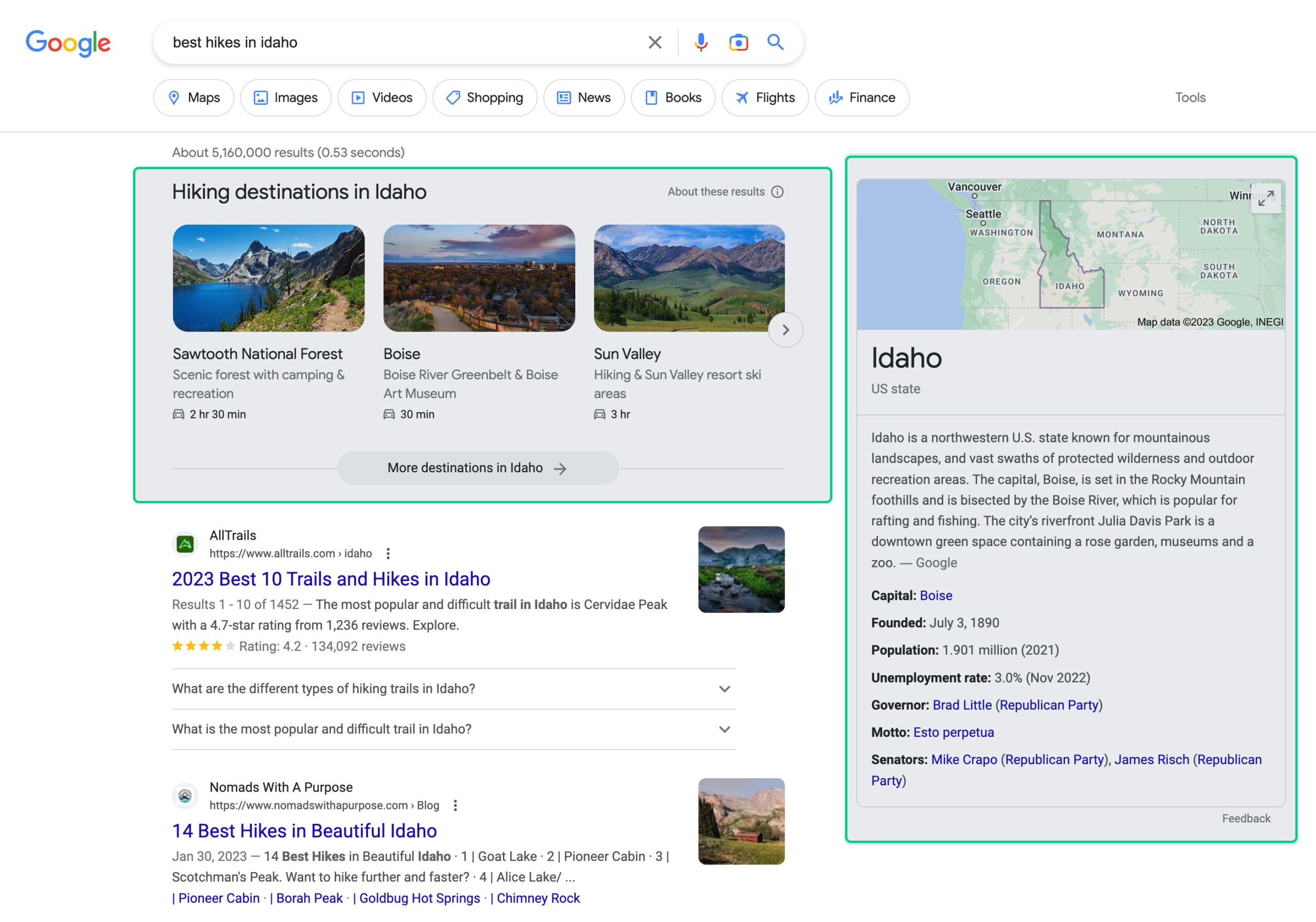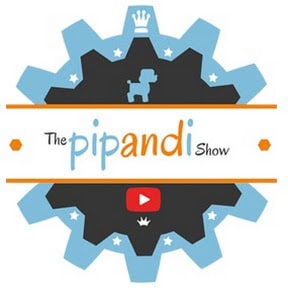Google Featured Snippets are those little clips of text or data that appear at the top of the SERP, or search engine results page. They usually show up at the very top of the page but can appear below sponsored content. You can typically find them above the “People Also Ask” section.
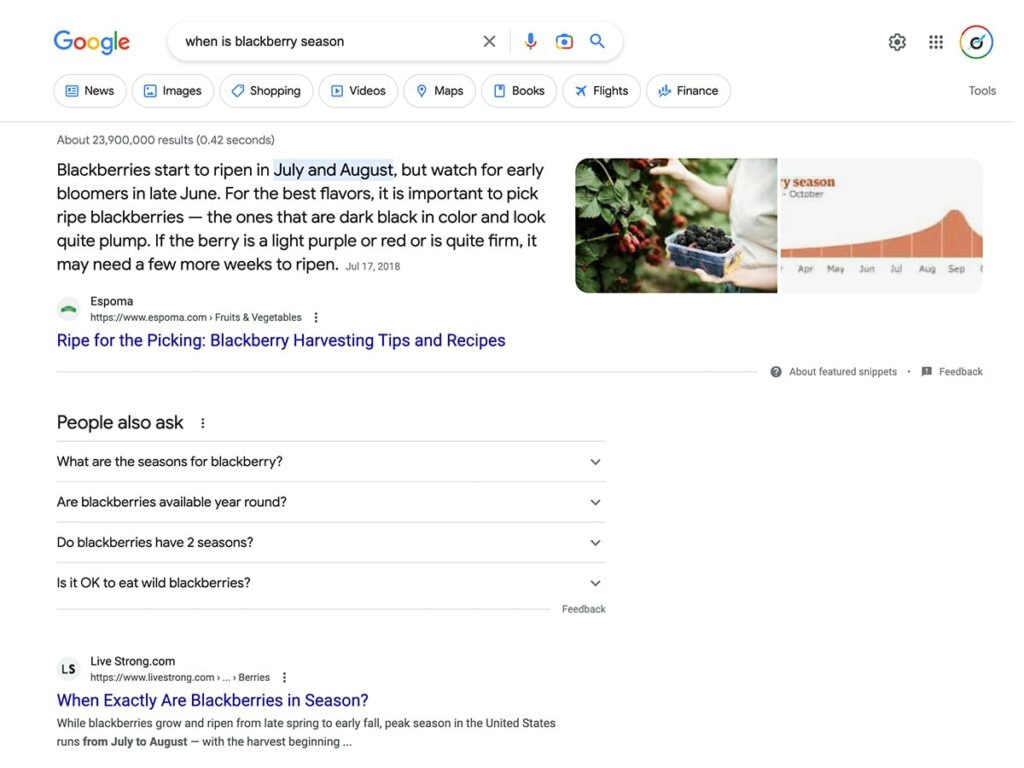
Most Google snippets feature a specific piece of content. Basically, the Google algorithm finds a segment from a page on the web that it thinks best answers the user’s question and displays that answer right at the top of the search results.
This position is often referred to as position #0 on the search page because it appears above the rest of the organic search results. However, after Google updated its algorithm to not display the same website in the featured snippet and in another search result on page 1 (the top 10 search results) the featured snippet became effectively position #1.
Why Winning the Google Featured Snippet is Great for SEO
I frequently get asked why we would ever want to win the featured snippet. “Don’t snippets just take away the user’s reason for clicking on your article?”
Sometimes, the answer is yes.
For some search queries, a simple answer is enough for people. But I find that in most cases, the snippet only gives you a flavor of the answer. This is especially true if you choose to write content for search queries that are more complex than a simple “yes” or “no” answer can really satisfy.
Creating content that wins a Featured snippet actually does 3 great things for you.
- Winning the featured snippet gets your content seen first, at the very top of the search results, even if other factors may have caused your article to rank much lower.
- The featured snippet makes your content stand out on the page, making it more likely to catch people’s eye and get their attention.
- You get to give people a flavor of what your content has to offer. If your featured snippet is good, it can increase the likelihood of people clicking to learn more.
The 6 Types of Featured Snippets on Google
There are 6 different types of featured snippets on Google. 2 are owned by Google and often don’t link directly to a source for the information, or they gather information from many sources and link out to some of them.
The other 4 types of snippets feature content from specific websites. These are the snippets we want to win to get our content featured at the top of the SERP.
Knowledge Graph (or Knowledge Card) Snippets

Knowledge Card snippets are snippets where Google aggregates a bunch of information about the subject of the search and presents that information right at the top of the SERP. It often links out to several other pages which are often other Google-owned pages.
These snippets often show up in the SERP when you search a name, location, or topic generically. In the example above, I searched “best hikes in Idaho” and still got one of these, but knowledge card snippets are most common when searching for things like the name of a celebrity, a well-known brand or product name, or the name of a city or state.
They’re especially common when the searcher’s intent isn’t clear and the topic they searched is fairly broad.
Rich Answer Snippets
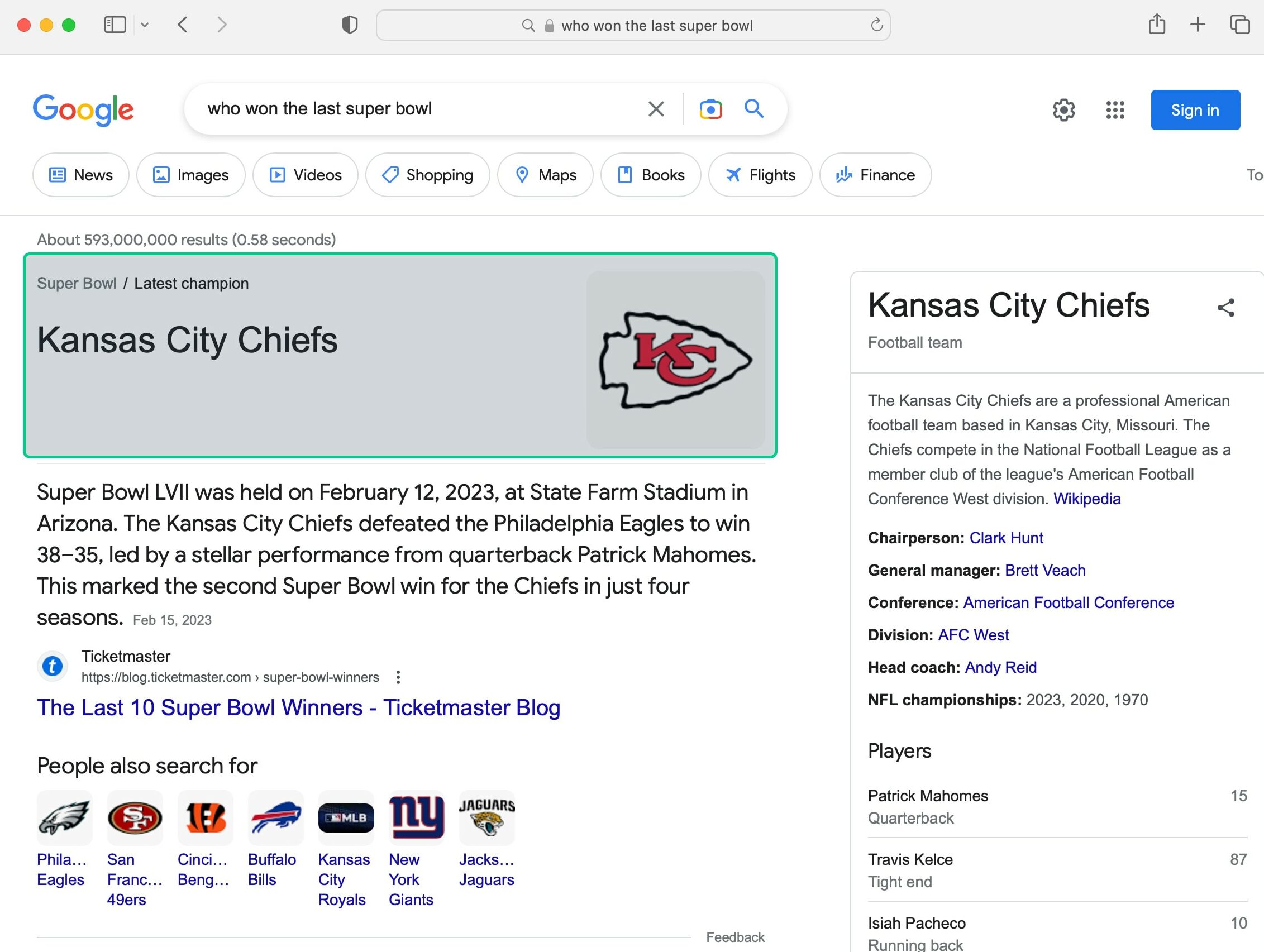
Rich answer snippets are snippets where Google directly answers the question without referencing a specific source for its answer. In many cases, rich answer snippets are immediately followed by a paragraph snippet that has additional information and links to a specific source.
Paragraph Snippets
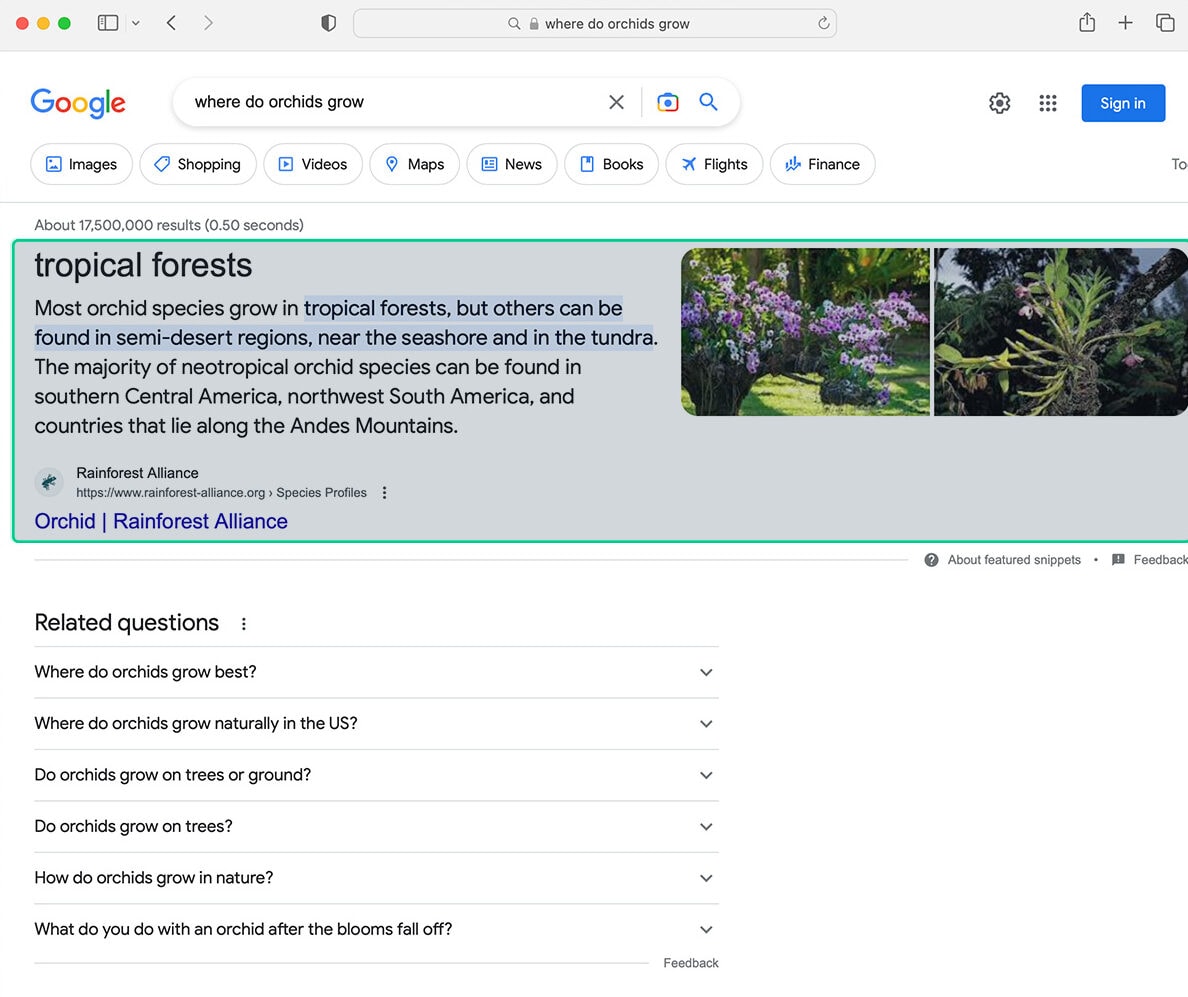
Paragraph snippets are concise but thorough answers to a specific search query that appear at the top of the Google SERP in the form of a paragraph. In 32% of cases where there is a paragraph snippet, Google will also display one or more related images.
Paragraph snippets are by far the most common type of snippet, appearing 73% of the time when there’s a snippet as well as in most cases where there’s a rich answer snippet.
Winning a paragraph snippet requires that you create a section of your blog post that thoroughly and concisely answers a specific search query in very few words. To learn how to format your paragraphs to win paragraph snippets, keep reading. I’ll show you exactly what to do!
List Snippets
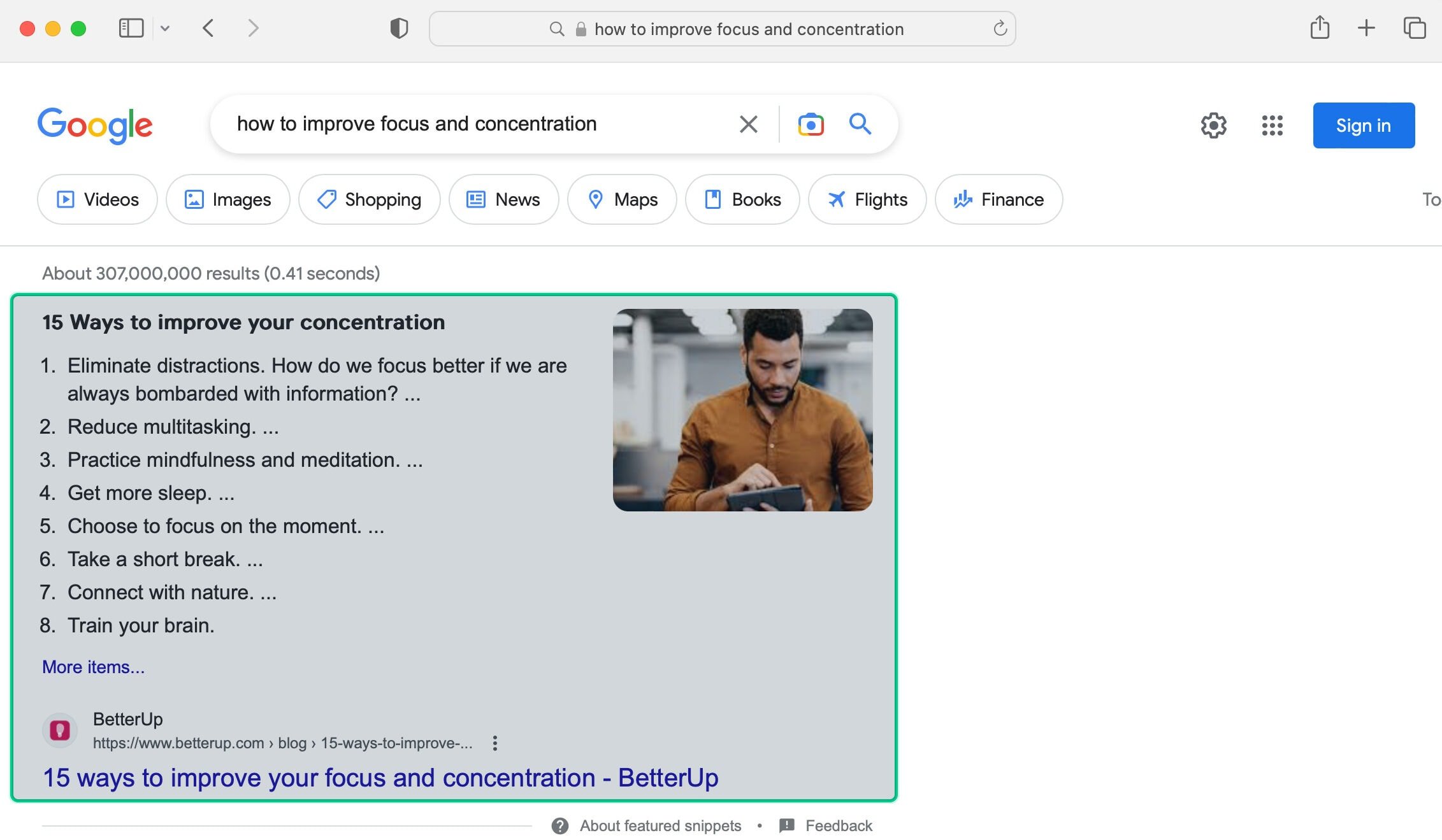
List snippets are when Google answers the query with a list. These can be lists of ideas or steps in a process or tutorial.
In 68% of list snippets, the list appears in the article as a bulleted or numbered list with all of the list items appearing together and in order. In the other 32% of cases, the listed items show up throughout an article, often as headings with an explanation or additional details for each.
List snippets are the second most common type of featured snippet, appearing 14% of the time when there’s a snippet.
Video Snippets
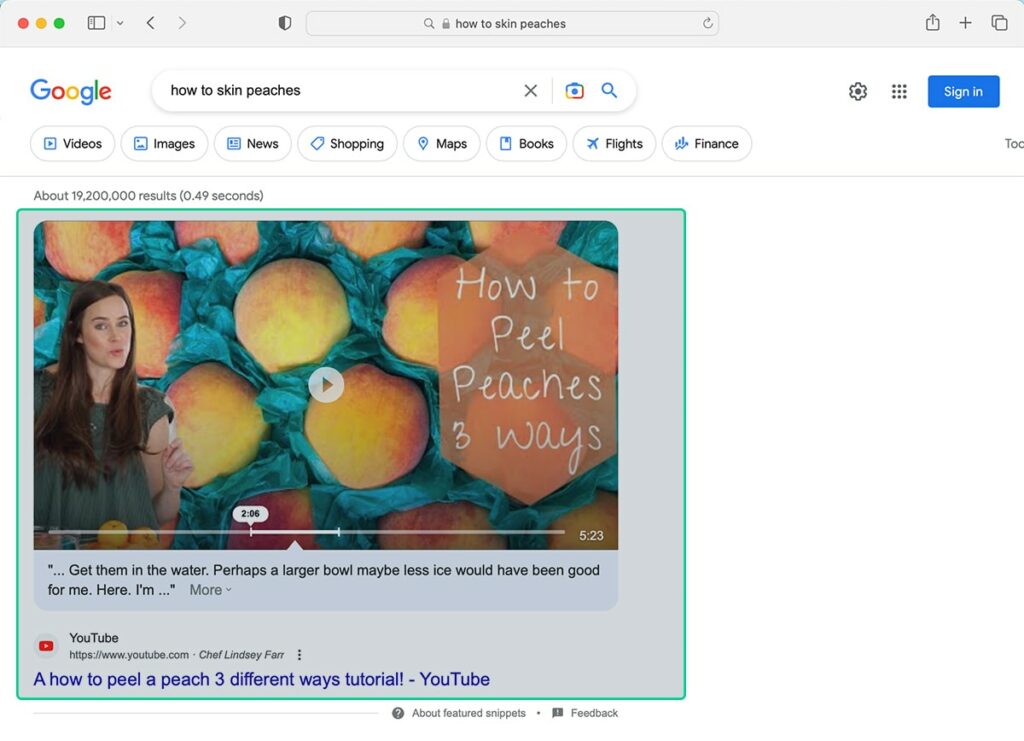
Video snippets are when Google features a single video at the top of the SERP, often highlighting a clip from the video with the most relevant information for the search query. This is different from the row or list of videos that Google often displays near the top of the SERP when video results are relevant.
For video snippets, the length of the video doesn’t matter, but the highlighted portion tends to be up to about 2 minutes long.
Table Snippets
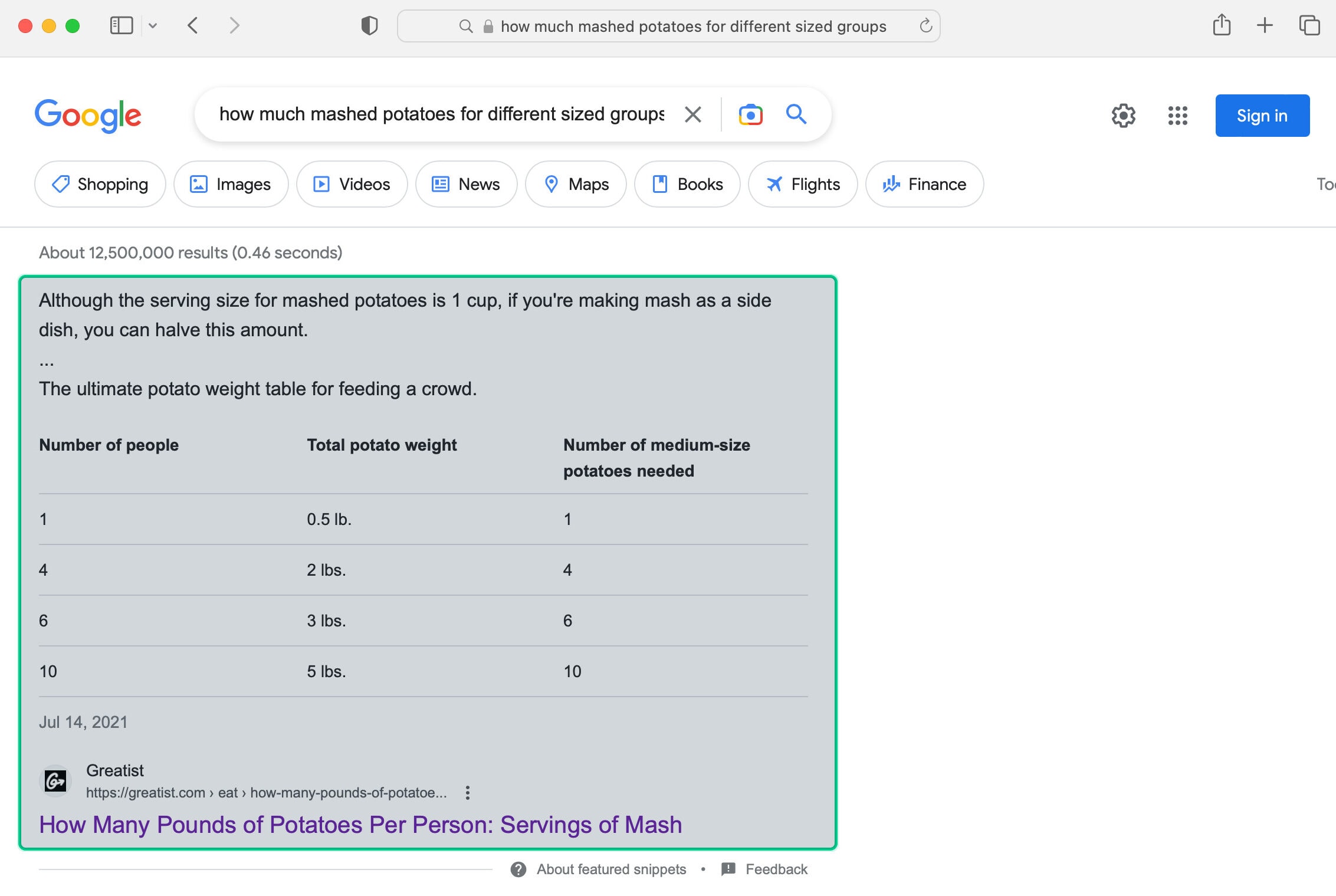
Table snippets are snippets that grab the most relevant data from a table in an article and display that information at the top of the SERP.
Table snippets display a maximum of 5 columns with 4 rows of data (not counting the header row). However, table snippets are often pulled from tables with far more than 5 columns and 4 rows.
The 2023 Google Featured Snippet Study by Income School
In 2023, we at Income School conducted a study of hundreds of search queries on Google. The focus was on the types of queries that we, as bloggers, would actually write blog posts about. So we omitted queries like “What is 7 x 45?” and “What’s the current weather in Abu Dhabi?”
Of the queries we searched we found that
- 68% of queries had a snippet
- 8% of snippets were Google-owned snippets
- 64% of Google-owned snippets were rich answer snippets that also included a paragraph snippet and a link to an article.
- 97% of all snippets included a link to one specific piece of content and could be won by a blogger
Here’s how that breakdown looks visually.
Breakdown of Search Results
[ninja_charts id=”1″]
Breakdown of Featured Snippets
[ninja_charts id=”2″]
How to Win the Google Featured Snippet
We win snippets by creating Answer Targets. Answer targets are short but thorough answers to a specific query that someone would search on Google and that meets the criteria of a featured snippet. Answer targets are an attempt to win a snippet.
Because paragraph-style snippets make up over 73% of all featured snippets in the Google SERP, it’s valuable to understand what it takes to win these kinds of snippets.
We do create answer targets for lists, tables, and videos, but paragraphs are the most common still.
In our snippets study, we found a few important factors that were consistent in all paragraph snippets.
- Paragraph snippets were all between 55 and 320 total characters (not words) and the median snippet length was 268 characters. I found multiple paragraph snippets that were exactly 320 characters, but none that were longer. Keep any paragraph-style answer targets between about 200 and 320 characters.
- Paragraph snippets always answer the basic form of the question without requiring the reader to reference other information. Readers choose to continue reading because the in-depth answer is always more complex, but the answer target should answer the question as thoroughly as possible in 320 characters or fewer.
- While paragraph snippets can be pulled from anywhere in an article, 71% of paragraph snippets come from the first half of the article with 41% coming from the first few paragraphs.
In addition to these requirements, we’ve developed a series of helpful tips for winning paragraph snippets based on our experienced working with thousands of bloggers. We share more about that in this video.
Error processing API data.

